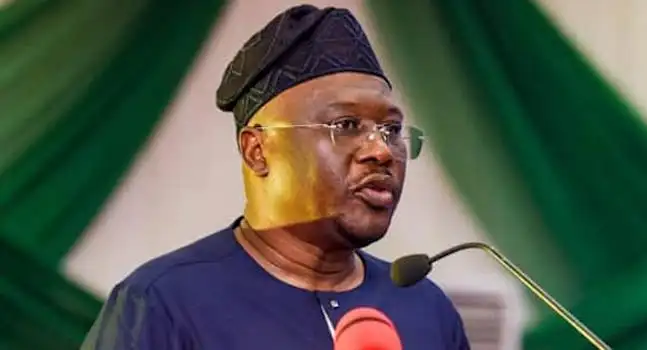Adamawa State governor, Ahmadu Umaru Fintiri has commenced the implementation of his ambitious Mega and Model Schools projects.
On January 25, the governor officially launched the construction of the model nursery, primary, and junior secondary schools across all 21 local government areas in Girei Local Government Area. Additionally, the governor plans to build comprehensive one-in-all mega secondary schools, two in each of the three senatorial districts of the state.
The big question is: Why is the Adamawa State governor engaging in these enormously ambitious projects? There are three answers. First, according to the United Nations Children’s Fund (UNICEF), one in three children in Nigeria is out of school, totalling 10.2 million at the primary level and 8.1 million at the junior secondary school (JSS) level. Adamawa State, positioned as a frontrunner in the North for reducing the number of out-of-school children, aims to sustain and enhance its progress. Additionally, the state has achieved remarkable milestones in maintaining existing schools and securing impressive student performance in WAEC and NECO. Notably, in the 2023 NECO examination, Adamawa came first in the North and ranked second nationally for students with more than five credits in all subjects, including mathematics and English. Furthermore, as part of Governor Fintiri’s 2024 budget commitment, promises include the allocation of projects exceeding one billion Naira to each of the 21 local government areas in Adamawa State. The construction of model and mega schools reflects a dedication to fulfilling these promises and spreading development and resources beyond the state capital, fostering a sense of inclusivity among the people.
While some dissenting voices suggest that the government should focus on the rehabilitation and maintenance of existing schools and skill vocational centres, the governor has already taken care of that through well-designed approaches.
- Climate change: Nigeria to reduce emissions through carbon market
- Nwabali returns to training, team medics to decide his fate today
Adamawa State, known for its exemplary education sector management, employs a highly regarded systematic and systemic approach, according to experts. Adamawa has implemented a system that consistently maintains school infrastructure while concurrently constructing new ones based on needs and distribution. The state actively recruits new teachers and provides ongoing training for existing ones, aiming to enhance teacher quality, welfare, and pupil enrolment to address the challenges posed by out-of-school children.
According to the Commissioner for Education, Dr. Umar Garba Pella, there are essentially two types of schools in the world: those with classrooms and street schools. Failing to enrol children in schools with classrooms may result in them attending street schools, where one child in such a setting can negatively impact the education of 10 children in a conventional classroom.
There are three takeaways from Gov. Fintiri’s launch of the construction of the 21-model nursery, primary and junior secondary schools, and the six mega schools.
Firstly, there is public excitement; the majority of Adamawa residents are enthusiastic, recognising the government’s effectiveness and the inclusive nature of infrastructure development. Secondly, the projects will have a regional impact: the Model and Mega schools in Adamawa are expected to significantly influence not only the state’s education sector but also contribute to the broader educational landscape of the northeast subregion. These schools are designed to provide advanced facilities, technology, and specialised programs, accommodating a large number of students and fostering diversity.
Thirdly, the schools will have multipurpose and economic impact. Governor Fintiri’s mega and model school projects aim to address the challenges highlighted by UNICEF. The UN body said that 12.4 million children in Nigeria have never attended school and 5.9 million left school prematurely. Thus, the project will not only tackle the high number of out-of-school children in the northeast but also provide students with modern skills aligned with globalisation. Furthermore, the economic impact is evident, with the substantial investment of 16 billion naira in the model school project expected to positively affect the lives of local residents in various ways.
Zayyad I. Muhammad wrote from Abuja, [email protected],

 Join Daily Trust WhatsApp Community For Quick Access To News and Happenings Around You.
Join Daily Trust WhatsApp Community For Quick Access To News and Happenings Around You.


